These Beautiful Fine Art Photographs Seek to Modernize Impressionism
Categories: Art | Beauty | Nature | People | Photo project | World
By Vika https://pictolic.com/article/these-beautiful-fine-art-photographs-seek-to-modernize-impressionism.htmlFrench fine art photographer Réhahn is well known for his excellent documentary and travel photography. However, he has embarked on a new project with an incredible style, Impressionist Photography.
10 PHOTOS
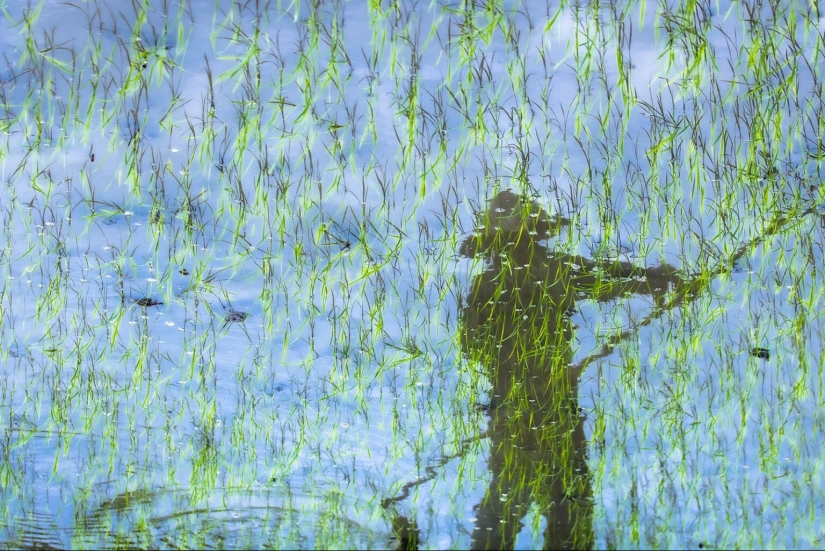
1. Starting a New Project
Although Réhahn has traveled to more than 30 countries and now lives in Vietnam. However, while he calls Vietnam home, he recently returned to France to reconnect with his roots in the Honfleur region of France, known as the birthplace of the Impressionist art movement in the 19th century.
In 2020 and 2021, Réhahn was hot off the heels of finishing a nearly decade-long project, Precious Heritage Museum. In that project, he tells the stories of 54 ethnic groups in Vietnam through fine art photography.
However, while looking for his next big project, the pandemic began, which limited Réhahn’s travel. Undeterred, he began to dig into the artistic history of his home and found that he connected deeply to Impressionism and its philosophy.
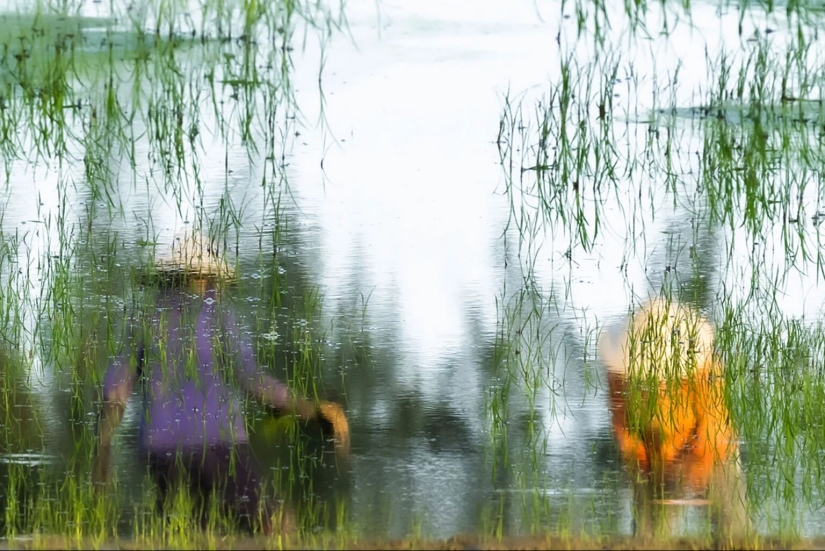
2. Impressionism’s Origins and Réhahn’s Style
Impression was a 19th-century art movement developed in France characterized by thin and visible brush strokes and an emphasis on accurately depicting natural light.
Because of their modern fame, it is easy to view Impressionists like Claude Monet, Camille Pissarro, Edgar Degas, and many more, as having painted within a rich artistic tradition. However, that is not the case. Impressionists fought tooth and nail — and paintbrush — against strict and rigid academic-style art.
Even the name “Impressionism” initially reflected the movement’s tentative and disrespected place within the art world. The term “Impressionism” was pulled from a critical review of Monet’s 1872 work, Impression, Sunrise, where French art critic Louis Leroy wrote, “A preliminary drawing for a wallpaper pattern is more finished than this seascape.”
The early Impressionism movement was closely tied to the French countryside and how sunlight interacted with the rolling hills, fields, and riverbanks.
“Réhahn sought to reimagine the initial influences of the Impressionists, but in a contemporary way. Light is an essential tool for all photographers, finding a way to use it in a completely original style was the challenge,” Réhahn’s website explains. “Refusing to use filters or any other artifice for the retouching of his images, he decided to use nature itself to give his work an impressionistic aspect which, under the right conditions, can almost appear to have the texture of paint. The use of reflections (a constant source of inspiration for Monet), the distortion of a scene through the heat of a fire, or even through drops of falling rain, are necessary effects for the creation of these artistic works. They also use the bright complimentary colors and pastoral scenes that filled the oeuvres of painters such as Van Gogh and Pissarro.” As Réhahn tells PetaPixel, Van Gogh is a Post-Impressionist painter but is still a worthwhile inclusion due to Van Gogh’s significant influence.
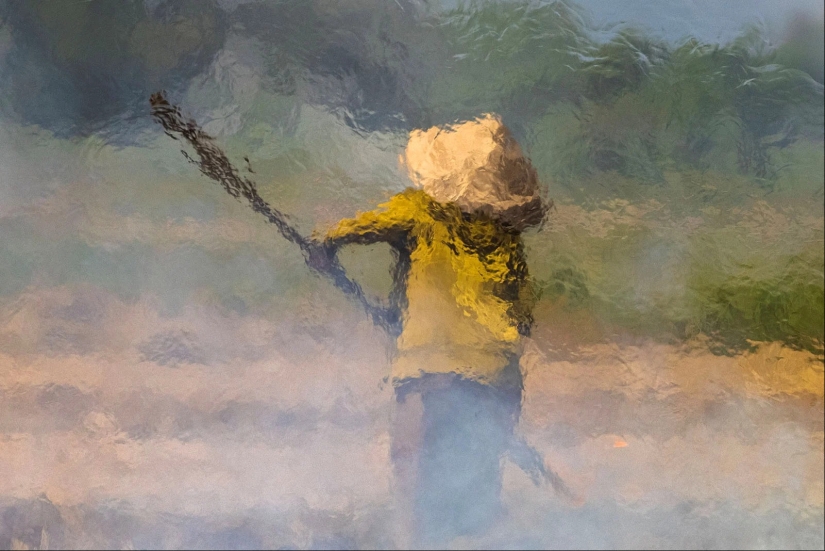
3. Impressionist Photographic Styles and Techniques
Réhahn relies heavily upon reflections and heat to create paint-like texture in his images. He makes minor adjustments during post-processing, primarily to contrast and clarity, and never superimposes images on each other or creates composites. Everything is created in the camera in a single frame.
This approach means that timing is of utmost importance, like with almost any type of photograph.
“Flame II” by Réhahn | “I find that fire is the best conductor for ‘light bending,’ which is why these photos are all shot when farmers are burning their fields to refresh the soil. I can’t control the heat distortion,” Réhahn explains.
“Shooting through heat distortion is all about timing. Heat shimmer only occurs for a short period of time when the air is hot enough to change the density of the air and its ability to refract light,” Réhahn tells PetaPixel. “The ratio for the heat photos is one good one out of 40 or 50 photos. I’m still experimenting.”
When it comes to water and reflections, there needs to be just enough movement in the water to bend reflections and provide the desired texture and distortion, but not so much movement that it is impossible to see the subject’s form in the reflection.
“Lighting is also crucial because the play of the sunlight on the water is what gives a crispness to the colors and dimension to the final piece,” Réhahn says.
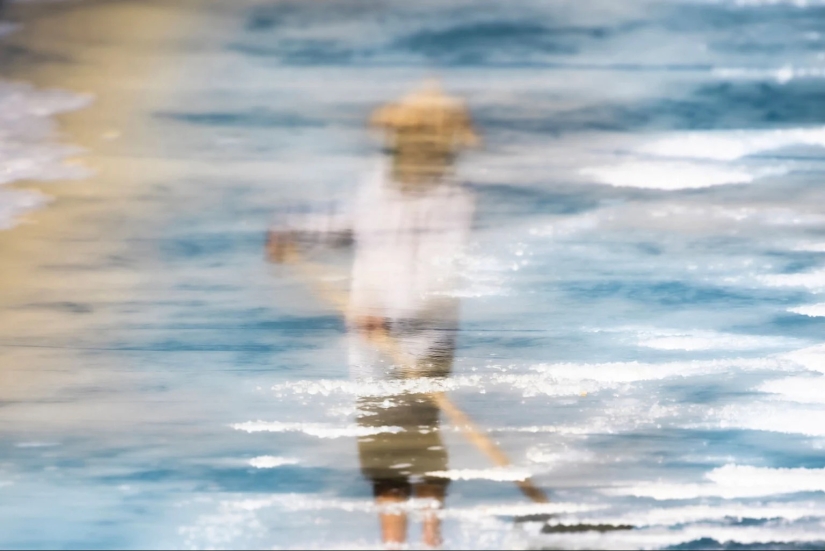
4. “Ocean Wave” by Réhahn
The Pace of Photography and Painting is Different
Even though early Impressionists were criticized for their relatively fast-paced approach, each painting still took a lot of time to build, layer by layer. Given that Réhahn is working within the constraints of a single frame, how does he replicate the look of a layered painting with a photo?
“This is actually a question that I get asked a lot — how can painting and photography be equal art forms when a photo can be captured in an instant, and painting takes so much time? The answer is that photography is a process that starts long before the click of the camera. In the same way that an Olympic diver trains for years before the few seconds that they jump through the air and into the pool that the audience sees during a competition, finding the techniques for Impressionist photography and figuring out the right angles, lighting, timing, etc. is actually an extremely time-consuming process. I think of the light, subject, colors, and distortion as layers that are similar to the building up of paint that is the painter’s medium,” Réhahn explains.
From the outside looking in, it may seem like any one photo is created quickly, which is technically accurate from an exposure perspective, creating each image builds upon a vast amount of experience and practice.
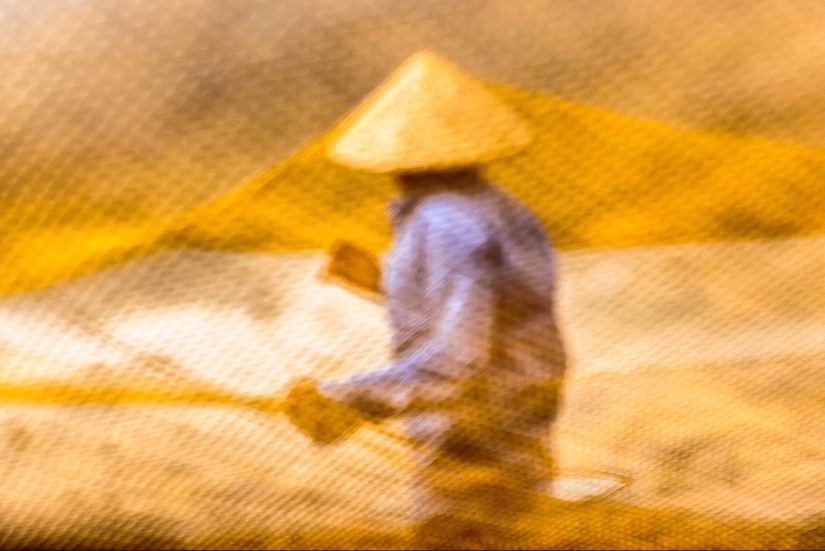
5. “Through the Net” by Réhahn
While a shutter press and image may take a fraction of a second to capture, everything that went into making that image what it is born of skill, talent, and experience developed over many years.
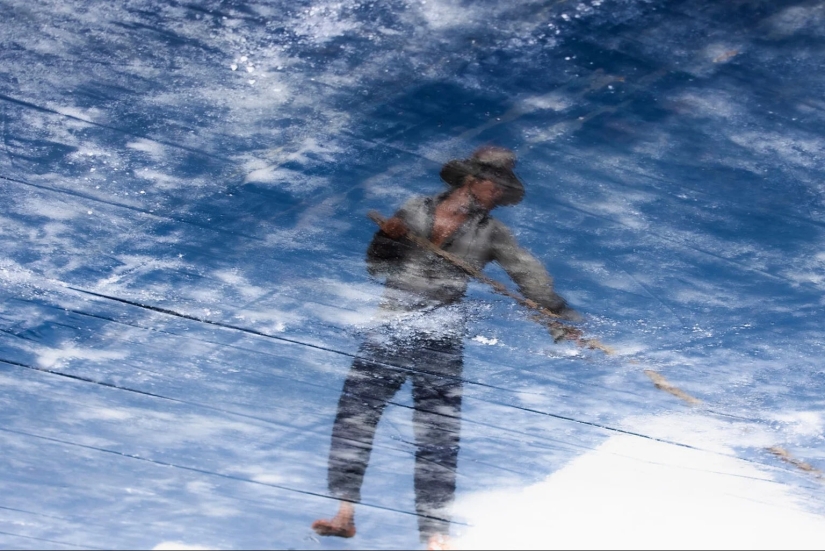
6. The Role of Japonisme
Japonisme, a French term, refers to Japanese art and design’s influence on numerous Western European artists in the 19th century. Happening contemporaneously with the birth of Impressionism, Japonism introduced Japanese influence to Europe as the trade routes between Europe and Asia expanded.
While the influence of Japonisme is evident across a diverse range of fields, including architecture, ceramics, and even gardening, it is most immediately noticeable within traditional forms of art. For example, the Post-Impressionist artist Van Gogh was heavily influenced by Japanese woodblock prints, Ukiyo-e. Famous Impressionist Edgar Degas was inspired as well.
As for Réhahn, many of his Impressionist photos include concepts from Japonisme, including Cloudkeeper. In this case, the influence is apparent in the “flat washes of color across large parts of the composition,” which Réhahn notes is common among Van Gogh’s work.
“Cloudkeeper” by Réhahn
Japonism also affected other styles of art beyond Impressionism. Réhahn’s photos, Carmine, Royal, and Imperial are also influenced by Japonisme but do not feature typical Impressionist style attributes.
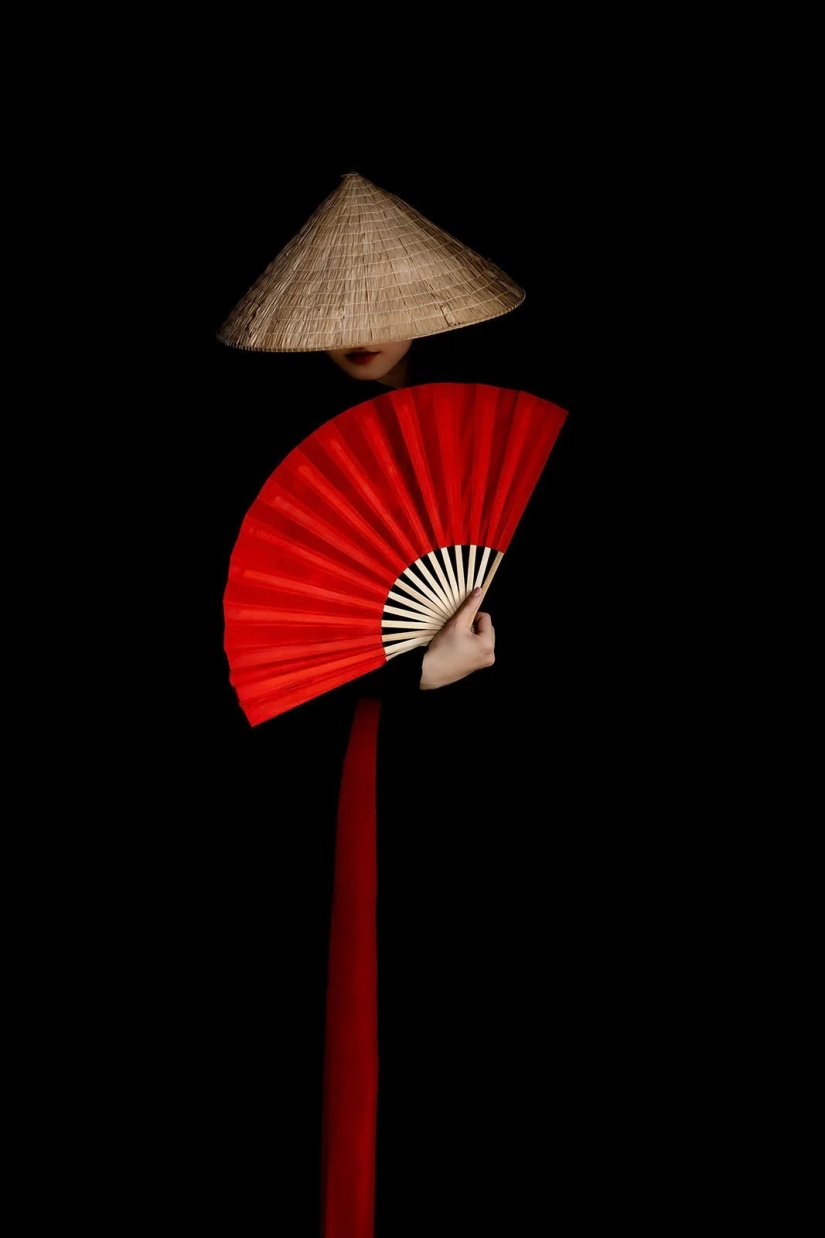
6. “Carmine” by Réhahn
The ‘Rule’ of Thirds
On Réhahn’s website, he discusses how someone can learn and understand a compositional rule very quickly, but it takes years to learn how to break it. He specifically singles out the rule of thirds.
“In general, I think the rule of thirds is a great place to start, but one shouldn’t depend on it for every photo. What I find interesting about the rule of 3rds is that it is a relatively recent invention. The term was coined in the late 18th century by the painter John Thomas Smith but was only considered to be a technique rather than a ‘rule’ back then. Thousands of years of art history had passed before the term was created,” Réhahn explains.
He approaches his compositions on a case-by-case basis. “I tend to set up my compositions based on the concept I want to convey, rather than by standardized techniques.” He continues, “Furthermore, I find it interesting that painters from Japan and across Asia often broke the rule, as did many of the Impressionists. I tend to focus more on things like perspective, verticalism, and cropping than on trying to place my images on a grid. For example, you can see a bird’s eye view in the photo Golden Fields. This perspective was often seen in Japanese block prints in the 19th century and before. It also breaks the rule of thirds. The photo Life Trace is asymmetrical, with the subject in the top third of the composition and a great expanse of yellow field below. I find that the verticalism created by the path in this photo is more important to the final scene than the idea that our eyes are focusing on points on a grid.”
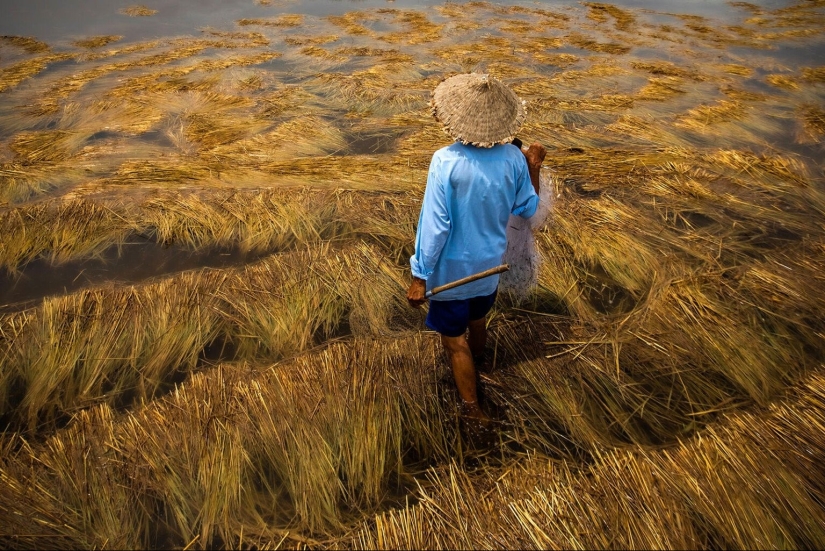
7. “Golden Fields” by Réhahn
Réhahn Channels History
“I have always been an avid reader. If there is something in the world that I’m trying to comprehend, I tend to go back into history and literature to understand how people might have dealt with a similar situation in the past,” Réhahn says. “The same goes for art history. I think that we can learn so much about ourselves by looking at the past.”
He returns to the idea that the modern view of Impressionism is very different from the experience that the pioneers of the movement had in the 19th century. They were “actually revolutionaries,” Réhahn explains.
The pastoral scenes that people like Monet and Degas painted were motivated by a fight against industrialization. The techniques used by Impressionist painters were a rebellion themselves, fighting against the rigor of traditional art education at the time.
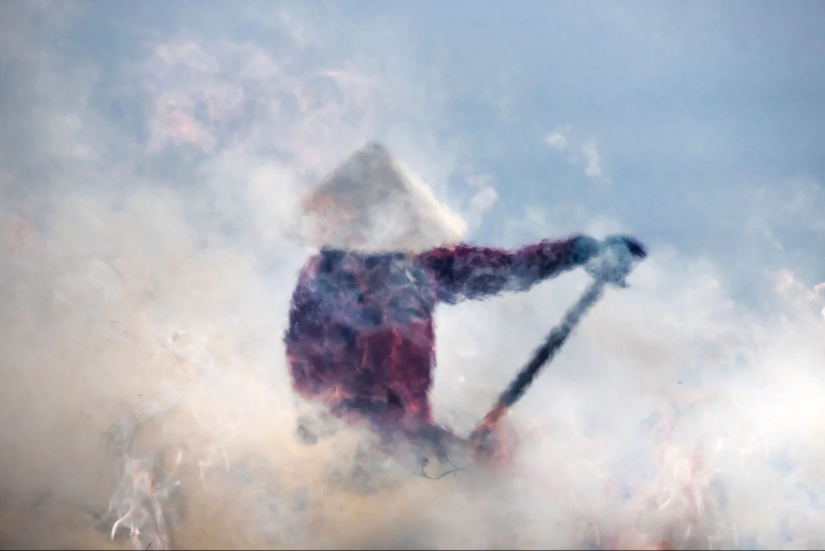
8. “Into the Cloud” by Réhahn
Artistic elites were telling people not just what was good or bad but what even counted as art in the first place.
That said, while Réhahn hopes to pay artistic homage to the artists and movements that inspire him, he sets out to chart new territory.
“My work is often inspired by specific artists, art movements, or styles, but since I approach my work differently it changes the final result. I think of it like chemistry. You add ingredients together and come up with something entirely different from what you started with. It’s all part of the experiment,” Réhahn explains. By exploring the work of artists before him, Réhahn hopes to respect the past while creating something new.
Travel and Art
“This might sound a bit cliché, but travel really did open up my eyes to the world. When people travel, they tend to look at things differently. Colors seem brighter, scenes appear to be more poignant because of their newness. This is why there is so much literature written about travel and adventure. And the same goes for fine art,” Réhahn explains.
He is inspired by meeting people, hearing their stories, and learning about new cultures and history. “The more I travel, the more connected I feel to all of humanity,” he says.
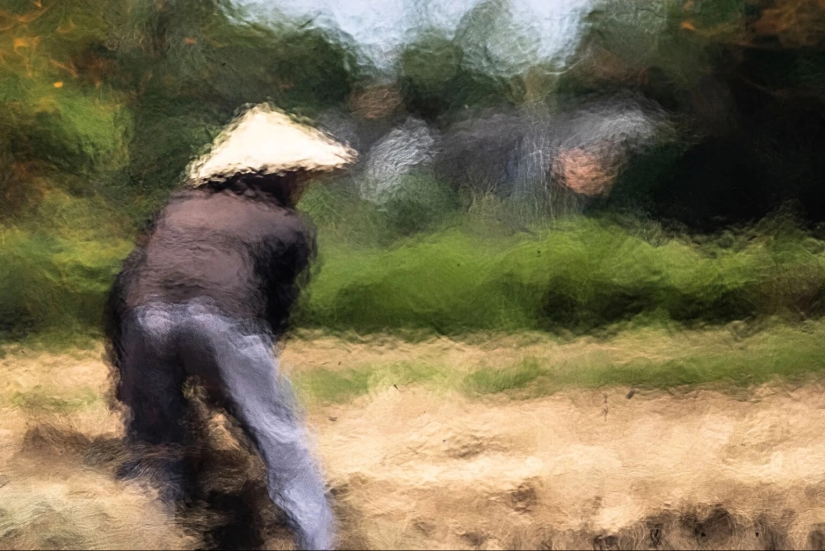
9. “Glorious Ashes” by Réhahn
Where to See Réhahn’s Photography
Réhahn’s work is on exhibit now in Honfleur, France, until the end of the year.
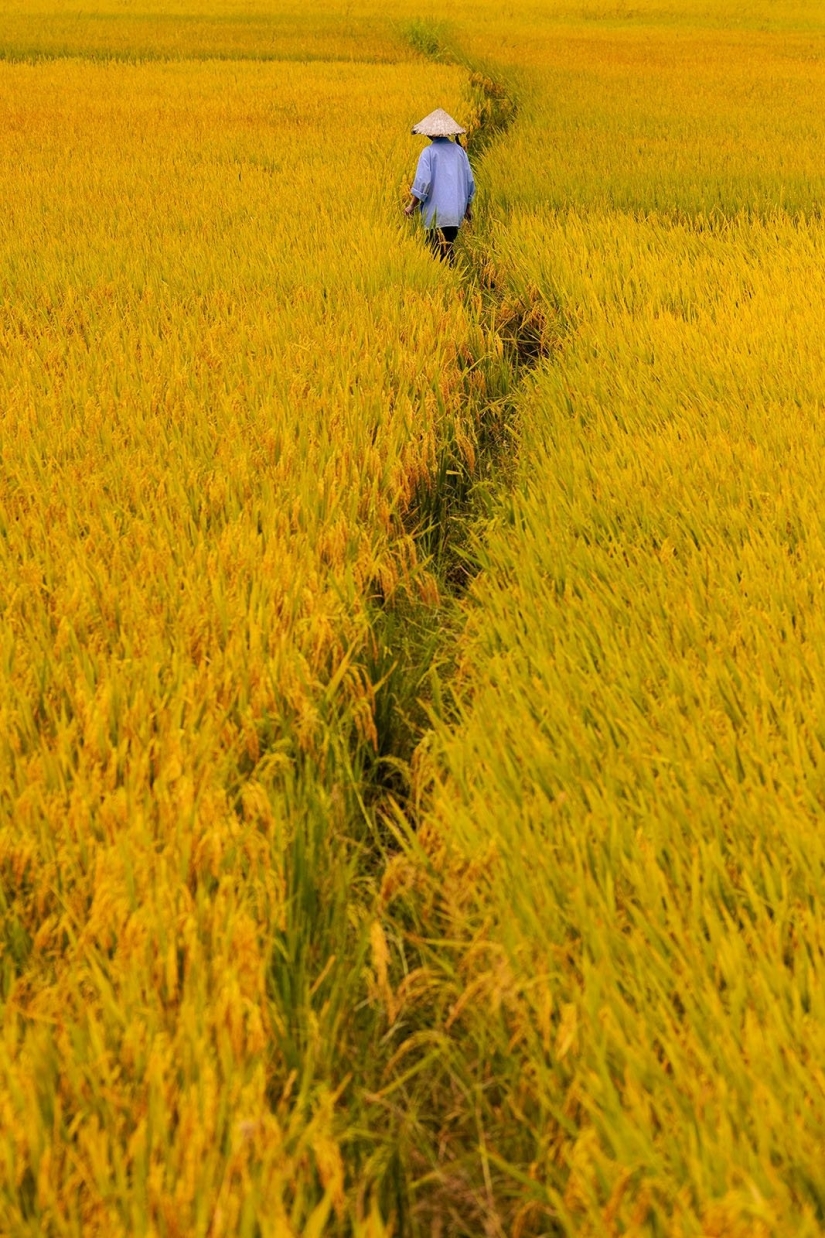
10. “Life Trace” by Réhahn
It is a special region for Réhahn. Not only is it an area where he spent considerable time as a child, but it is also the birthplace of Impressionism.
Honfleur’s mayor even compared Réhahn’s work to those of Monet and Eugene Boudin. “I wouldn’t go that far,” Réhahn admits. “But it’s certainly incredible to look out at the same harbor that these artists painted two centuries ago and to simply take in the light.”
Keywords: Fine art | Beautiful artworks | Impressionism | Modernize impressionism | Art styles | Arts | Impressionist Photography
Post News ArticleRecent articles

New Jersey photographer Robin Schwartz photographed her adorable daughter Amelia with a variety of animals from 2002 to 2015. The ...

Along with winter come holidays, scarves, mittens and ... health problems. In addition to flu and colds, the body can face even ...
Related articles

Miniature art has a special kind of magic that draws people in, and to celebrate that appeal, we selected the best work shared on ...

This artist’s appreciation for nature translates into beautiful embroidery art of landscapes.

The Independent Photographer’s 2025 Visual Story Award showcased ten exceptional photographs that exemplify the art of ...

Photographer Dylan Hamm has been wondering for a long time how many microexpressions our face takes that we don't even know about. ...